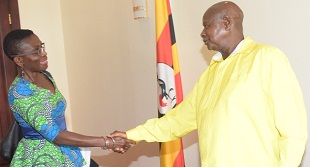The International Monetary Fund (IMF) has released its 2015 Regional Economic Outlook on Sub-Saharan Africa which calls for a policy reset.
The report casts a gloomy picture over the optimism that had been expressed by many regional analysts. Growth in the region as a whole fell to 3.5% in 2015 (the lowest in 15 years). In the report, it is estimated that there will be a further deceleration to 3% much lower than the 5%-7% growth rates that have characterised the region in the past. But has the growth momentum in the Sub-Saharan region stalled? Has the race towards middle income status turned into a mirage?
The IMF thinks the situation is still favourable in the medium term. However this potential can only be realised through an urgent fiscal policy reset. The slow-down in economic growth has been attributed to a decline in commodity prices especially for oil-exporting economies. In other countries like Liberia, this slump was due to the Ebola outbreaks which strained their economies.
According to IMF; “growth in Kenya is projected to rise to 6 percent, aided by investment in the transport sector, a pickup in electricity production, and a recovery in tourism. Similarly, Senegal’s strong growth is expected to remain broadly unchanged at 6.6 percent, supported by improving agricultural productivity and a dynamic private sector.” For Ivory Coast, growth is projected at 8.5 percent in the same period.

To its credit, Uganda performed better than neighbours Kenya and Tanzania as far as percentage of Debt to GDP is concerned. Uganda registered a 35.4% compared to 52.7% and 40.5% for Kenya and Tanzania respectively.
The IMF has also warned against the high dollarization in loans and deposits in Uganda. This the IMF says, “poses potential credit risks because of possible currency mismatches in borrowers’ balance sheets. These developments could initiate bank and sovereign risk feedback loops.”
In the report, the volume of mobile money transactions increased in Uganda. In the last three years, transactions doubled in broad money terms, reaching at least 30% of the population. The number of mobile accounts also exceeded the number of traditional bank accounts. For the case of Uganda, this in a way played a part in financial inclusion and subsequently raised the saving culture of Ugandans.
It is projected that Uganda will grow at a rate of 5.3% in 2016 and 5.7 in 2017. Real Per Capita GDP growth will stand at 2.2% (in 2016) and 2.6% (in 2017). In the same period, total investments as a percentage of GDP is projected at 27.8% and 29.0%. On the other hand, Gross National Savings as a percentage of GDP are estimated at 19.4% and 20.5%. Uganda’s government revenue (excluding grants) as percentage of GDP will also remain one of the lowest in the region at 14.0% and 14.4%.
With these IMF projections, a gloomy picture is cast upon Uganda’s middle income status ambitions set for the year 2020. With a largely service driven sector, the sustainability of this growth and whether it will result in the much-needed transformation as aspired by the NRM government.
RELATED STORY: IMF hails Uganda on infrastructure, inflation (click here to read)
IMF Regional Economic Outlook Sub-Saharan Africa April 2016 by The Independent Magazine
 The Independent Uganda: You get the Truth we Pay the Price
The Independent Uganda: You get the Truth we Pay the Price


